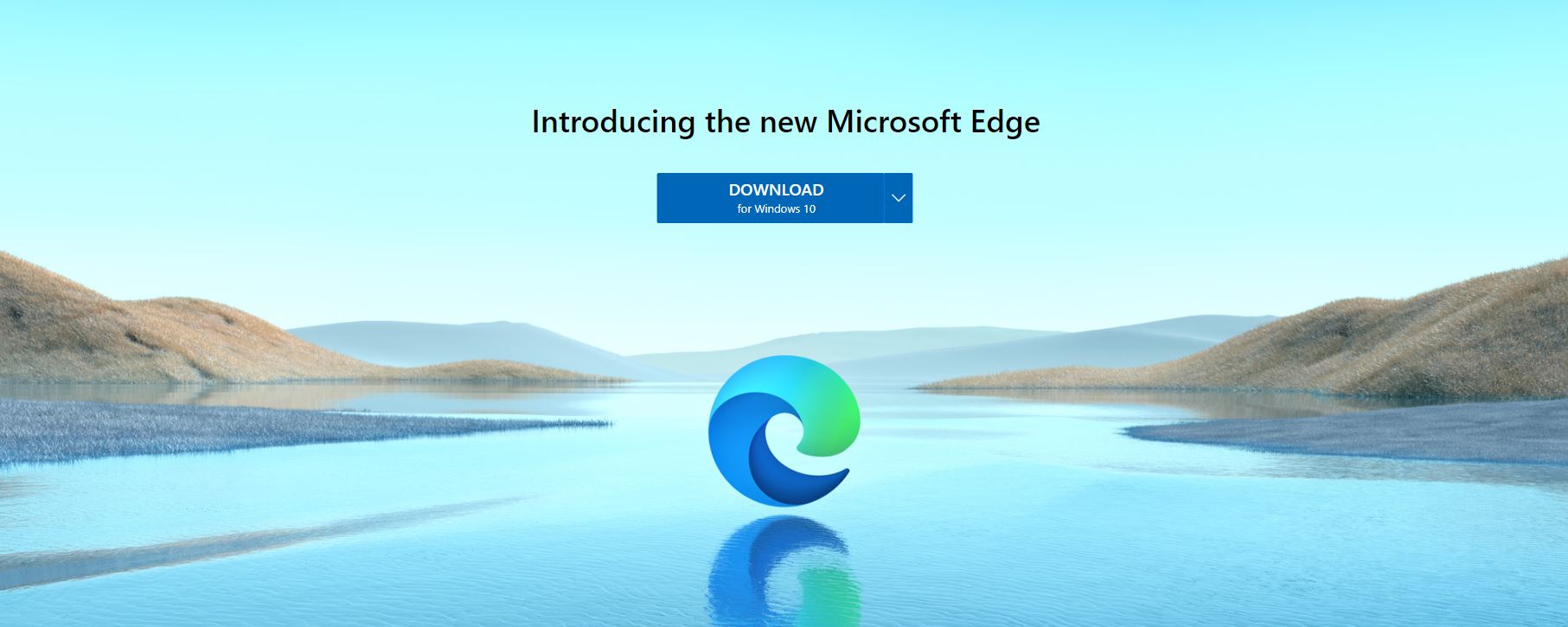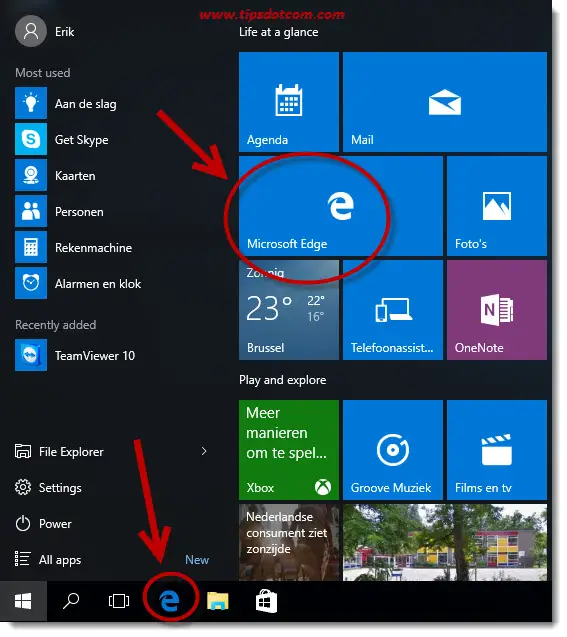Edge is a Windows 10 specific browser. If you would like revert back to Internet Explorer (IE), you can do so by following the steps below. 1) Open Edge navigate to any webpage of your choosing by typing the site into the URL address bar. 2) Select the top menu button (three dots in the upper right) click 'Open with Internet Explorer.' So, without further ado, let me the steps to enable Internet Explorer mode in the new Edge Chromium browser in Windows 10. Enable Internet Explorer mode in Edge. To enable the Internet Explorer mode in the Edge browser, you have to perform two major steps. First, enable a flag and then add a flag to the Edge shortcut. Let me show the steps.
The new Microsoft Edge is here. With improved security, privacy, speed, and ease of use, Microsoft Edge surpasses the experience you’ve come to know with Internet Explorer. When you make the switch to Microsoft Edge, you'll experience the web in a whole new way.
Better security
Microsoft Edge includes Microsoft Defender SmartScreen, which helps identify suspicious sites that may present phishing or malware attacks. SmartScreen also checks your downloads to help you recognize possible risks. For more information about security in Microsoft Edge, see What is SmartScreen and how can it help protect me?
Increased privacy
Tracking prevention
Microsoft Edge provides better control over how your data is tracked as you browse the web. It provides three levels of tracking prevention: Basic, Balanced, and Strict. You can choose the option that best suits your desired balance of personalization and privacy. For more information about tracking prevention, see Learn about tracking prevention in Microsoft Edge.
InPrivate browsing
Microsoft Edge offers InPrivate browsing, which allows you to hide your browsing history, site and form data, cookies, and passwords from other people who use the same device. InPrivate browsing includes InPrivate search with Microsoft Bing, so any searches on Bing won't be associated with you or influence your Bing search suggestions. For more information about InPrivate browsing, see Browse InPrivate in Microsoft Edge.
Smarter browsing
Microsoft Edge features built-in learning and accessibility tools that enhance your browsing experience, making it easier to find the information you need and connect to it in the way that suits you best.
Microsoft Edge integrates Immersive Reader for some websites, so you can hear web content read to you or view articles without distracting ads.
You can use Collections to organize content on the web around specific themes. Collections is useful whether you're organizing your research, planning a trip, doing comparison shopping, of just want to pick up your browsing later. For more information about using Collections, see Organize your ideas with Collections in Microsoft Edge.
Sync across all devices
With Microsoft Edge, you can sync your favorites, passwords, and other info across multiple devices. Just sign in to Microsoft Edge using the same Microsoft account on each device.
For more information about syncing across multiple devices, see Sign in to sync Microsoft Edge across devices.
Want Microsoft Edge for your mobile device? Get Microsoft Edge for iOS or Android.
Customize your browser
There are many ways to customize how your Microsoft Edge browser looks, feels, and behaves. You can change the browser's appearance (themes, toolbar, display fonts), set how a new tab page looks, and choose the startup behavior. To access these settings:
At the top corner of the browser, select Settings and more > Settings .
Under Settings, do any of the following:
To change appearnce, select Appearance and make the changes you want to your default theme, zoom, toolbar, and fonts.
To change startup behavior, select On startup, and then select what you want Microsoft Edge to display on startup.
To set how the page looks when you open a new tab, select New tab page, then select Customize, and in the window, select the options you want for Page content and Page layout.
You can also personalize the new tab page in Microsoft Edge.
Above the address bar, select the + button to open a new tab.
At the top corner of the new tab page, select Page Settings .
Choose your page layout, background image, quick links, and more.
Scroll down to see your news feed and select Personalize to choose your interests.
Quickly import your favorites, passwords, and other browser data from Internet Explorer
To make your switch to Microsoft Edge as seamless as possible, you can import data from Internet Explorer and have all your saved favorites, passwords, and other info available to you. There's no need to recreate this data in Microsoft Edge.
For more information about importing your browser data, see Import favorites in Microsoft Edge.
Make Microsoft Edge your default browser
If you've downloaded Microsoft Edge but it's not your default browser, you can easily set it to be your default for Windows 10 or macOS.
Windows 10
Go to Start > Settings > Apps > Default apps > Web browser.
Select the icon for the current default browser, and then, in the list, select Microsoft Edge.
macOS
Internet Explorer 11 Download
Go to the Apple menu > System Preferences > General > Default web browser.
From the Default web browser list, select Microsoft Edge.
Get tips and tricks for Microsoft Edge
To get the most out of Microsoft Edge, check out Microsoft Edge Tips.
-->If you experience a recurring problem when you use Internet Explorer in Windows, you may try to repair or reinstall the program to fix the problem. Although this may sound intimidating, this article offers the most direct, trouble-free methods to perform this task.
Original product version: Internet Explorer 11, Internet Explorer 10, Internet Explorer 9
Original KB number: 318378
Repair Internet Explorer in Windows
You can reset the program settings to repair your Internet Explorer. To do this, use the following procedure:
- Exit all programs, including Internet Explorer.
- Press the Windows logo key+R to open the Run box.
- Type inetcpl.cpl and select OK.
- The Internet Options dialog box appears.
- Select the Advanced tab.
- Under Reset Internet Explorer settings, select Reset. Then select Reset again.
- Select the Delete personal settings check box if you also want to remove browsing history, search providers, Accelerators, home pages, Tracking Protection, and ActiveX Filtering data.
- When Internet Explorer finishes resetting the settings, select Close in the Reset Internet Explorer Settings dialog box.
- Start Internet Explorer again.
For more information about how to reset settings in Internet Explorer, see the following video.
Internet Explorer And Edge Not Working Windows 10
[!VIDEO https://www.microsoft.com/videoplayer/embed/c989d6d8-f8f9-4cb5-a2f1-da6a7e89f18b]
Enable and Disable Internet Explorer in Windows 10 and Windows 8.1
Windows 10
To disable Internet Explorer 11, use the following procedure:
Select Start > Search, and enter Windows features. Select Turn Windows features on or off from the results.
Uncheck Internet Explorer 11.
Select Yes on the following informational dialog that pops up:
Turning off Internet Explorer 11 might affect other Windows Features and Programs Installed on your computer including default settings. Do you want to continue?
Select OK.
When Windows finishes applying changes, restart your device for the settings to take effect.
To re-enable Internet Explorer 11:
Select Start > Search, and enter Windows features. Select Turn Windows features on or off from the results.
Select Internet Explorer 11 and select OK.
When Windows finishes applying changes, restart your device for the settings to take effect.
Note
You don't need to download and install Internet Explorer 11 in Windows 10 because it's already installed.
Windows 8.1 and Windows 8
Edge To Internet Explorer Windows 10
- Turn off the Internet Explorer features.
- Restart your computer after you turn off Internet Explorer. Then, Internet Explorer will be removed from your computer.
- You can turn the Internet Explorer Windows feature back on to reinstall it on your computer.
Reinstall Internet Explorer in Windows
Windows 8.1 and Windows 10
You can use the System File Checker tool to repair missing or corrupted system files to validate the corresponding system files.
Windows 7, Windows Server 2008 R2, Windows Vista, and Windows Server 2008 SP2
Step 1: Download Internet Explorer that can be installed on your Operating system using the following table as guidance.
| Windows version | Internet Explorer version that can be installed |
|---|---|
| Windows 7, Windows Server 2008 R2 | Download Internet Explorer 11 (Offline installer) |
| Windows Vista, Windows Server 2008 SP2 | - Windows Internet Explorer 9 (64 Bit) - Windows Internet Explorer 9 (32 Bit) |

Step 2: Uninstall the version of Internet Explorer that you may have installed on top of Internet Explorer 8.0 (For Windows Vista it is Internet Explorer 7.0) that natively ships with and installed as part of the operating system.
Note

Internet Explorer 8.0 (or Internet Explorer 7.0 on Vista) will continue to exist even after you uninstall newer versions.
Use the following procedure to remove Internet Explorer:
On the Start page, choose Control Panel, and then choose Programs and Features.
Under Programs and Features, select View installed updates on left pane.
Under Uninstall an update list, select applicable Internet Explorer version from the list (Internet Explorer 11 or Windows Internet Explorer 9) and select Yes to confirm uninstallation and restart your system to complete the process.
Internet Explorer Vs Edge Windows 10
Step 3: Install the version of Internet Explorer that you downloaded in Step 1 and restart the system after installation.
Internet Explorer Edge Download For Windows 10
Tip
After you reinstall Internet Explorer, run Windows Update to apply any available updates for Internet Explorer.
See also
If you still can't access some websites, get help from the Microsoft Community online.
